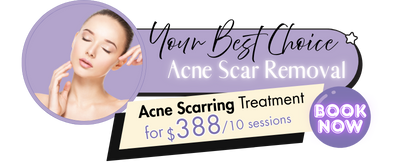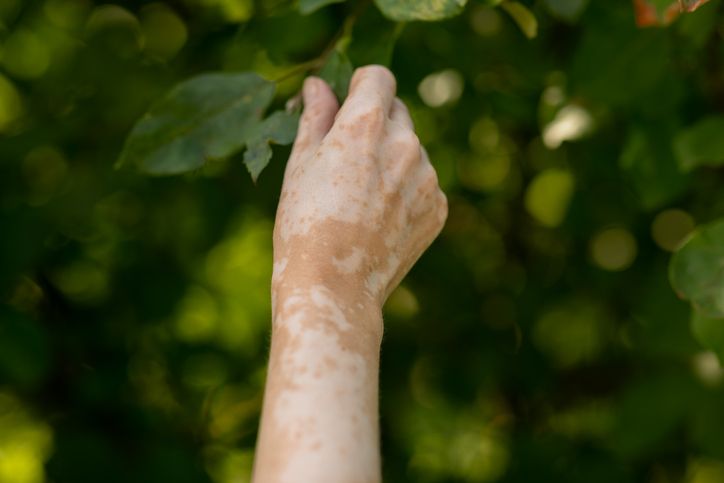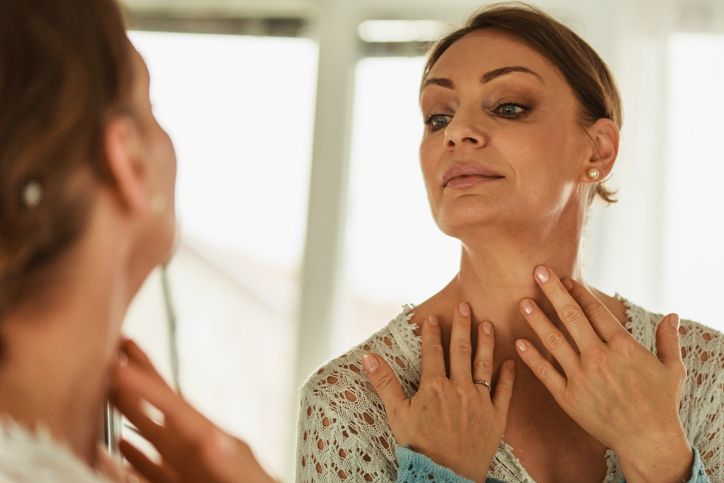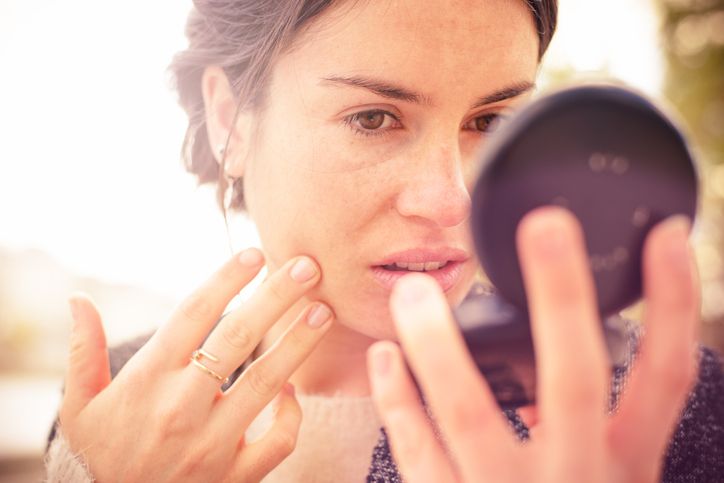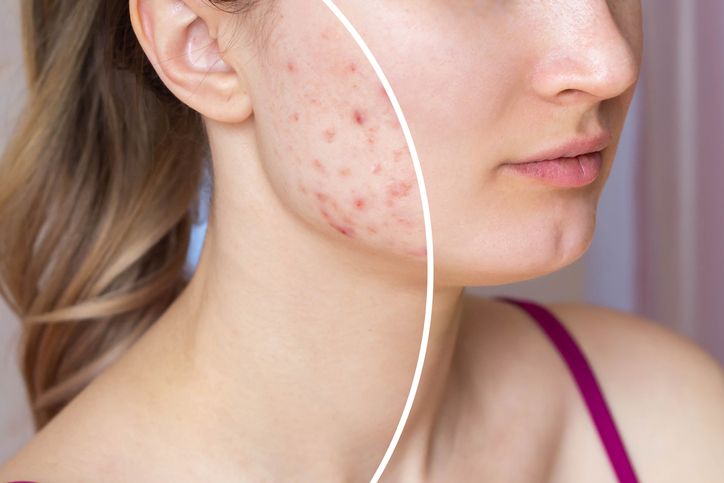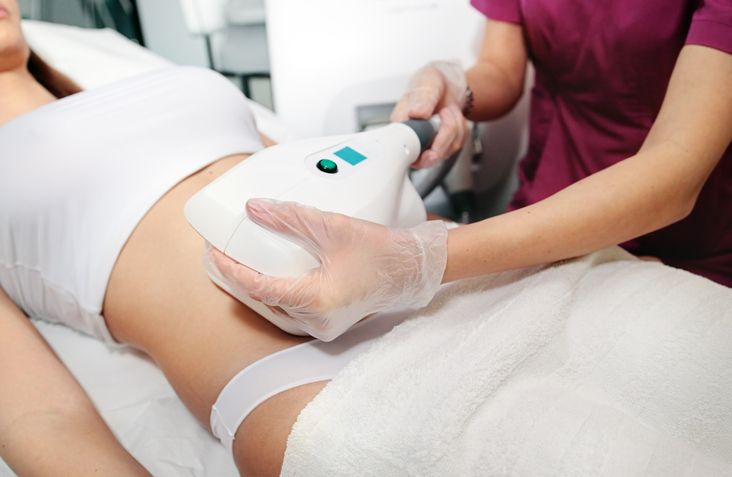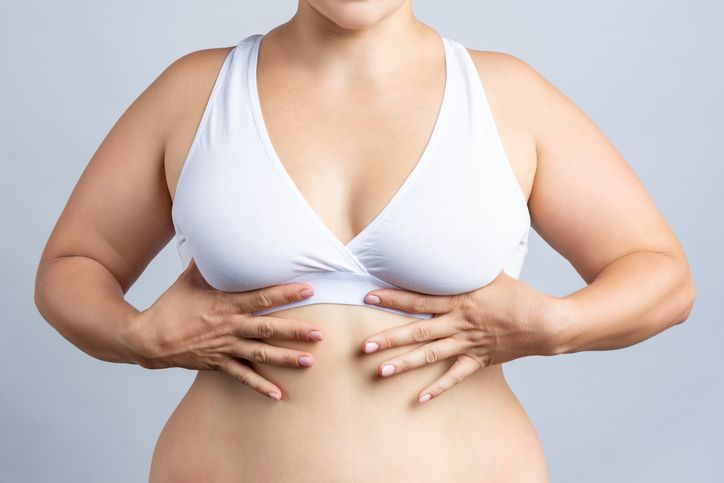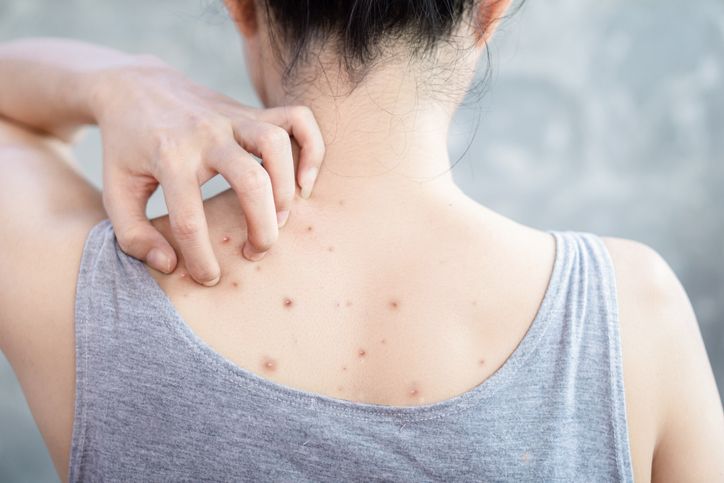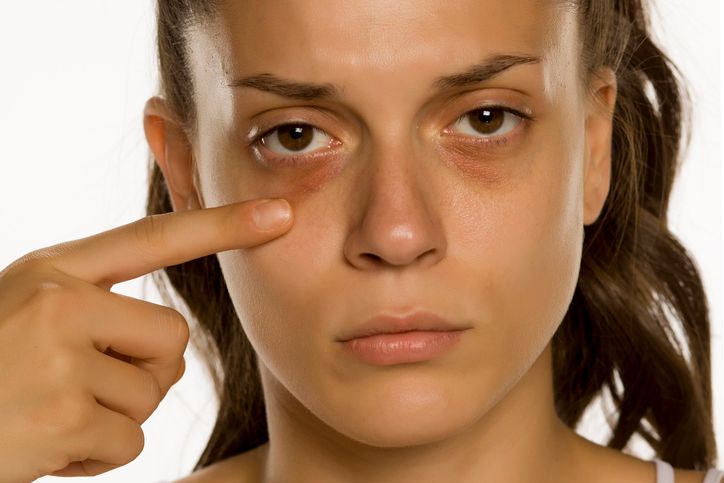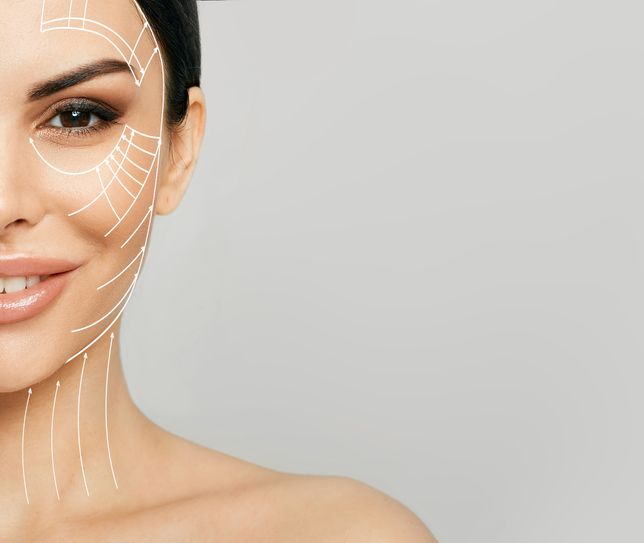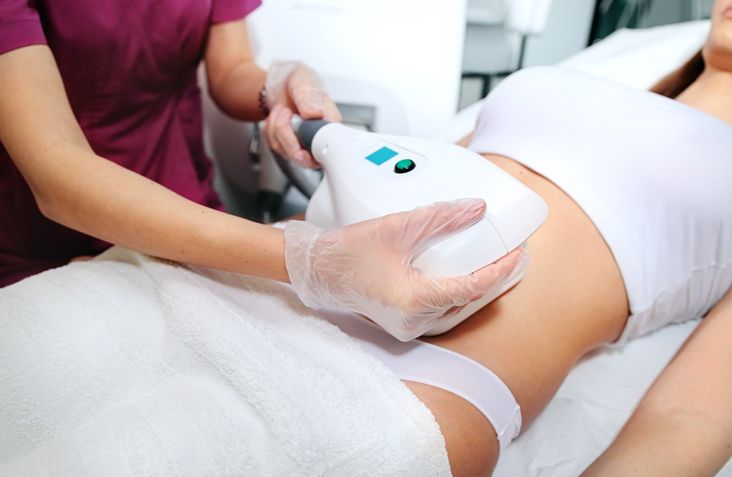
Book Now to Experience
Acne Scarring Treatment
1 Minute Self-Registration
Date should not be before minimal date
Author: Sophia Man|Updated: 4 June 2024
Acne impacts nearly every individual at any time during their lifespan, often at unpleasant moments such as before meetings, gatherings, or professional conferences. Acne occurs when the skin's hair shafts, or pores, become blocked by sebum and decaying skin tissues, resulting in comedones. Minor bacterial infections can then begin to develop, leading to inflammation including red lumps. Acne scarring haunts the pore of too many people who have already healed from aggressive acne. Thanks to technological advancements in the dermatological industry, there are many acne scar treatment clinics that comprehend and customise the most suitable acne scar treatment for individuals suffering from acne scars. In this article, we will be looking into what defines an acne scar, its causes and the different types of acne scarring that plague various individuals for a long time. We will also be looking into a wide array of treatments that helps to treat each type of acne scarring. Finally, we will dive right in and explore Perfect Laser Clinics’s acne scar treatment that helps expel excess and stubborn melanin particles that lay deep within the skin effortlessly and easily out of the body to give you a smoother and plump face with no acne scars!

1
What Actually are Acne Scars?
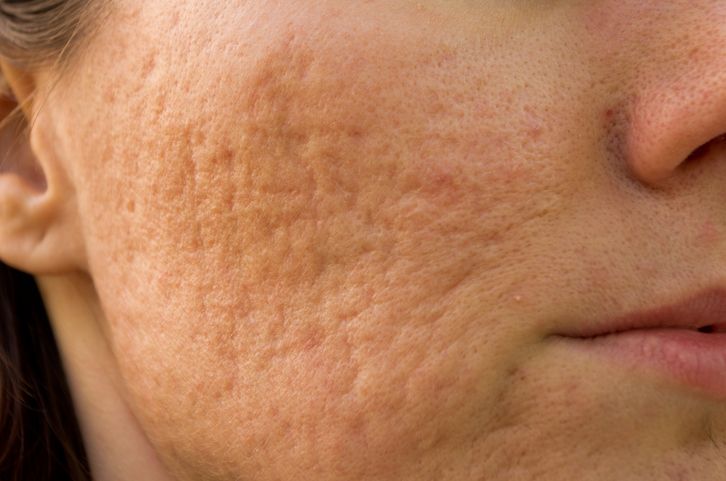
Acne scars develop as a consequence of the aggravation of acne lesions. The pimple pore develops, and the pore membrane begins to collapse. Some breakout lesions are tiny, with superficial scars that resolve fast. Pimple fluids can also leak onto adjacent tissue, causing deeper scarring. The natural skin reaction is to develop more collagen fibres to mend the scarring.
Acne scarring is classified into two types: scarring that occurs when skin tissue is lost, culminating in a depression on the top layer of the epidermis, and scarring that develops when skin tissues are elevated on the skin's surface.
In reality, this form of acne scarring indicates that the skin is performing its task – possibly quite too effectively. The skin produces collagen to aid in the healing of the injury — the acne — but when it produces an excessive amount of collagen, elevated scarring appears.
Remember that the mere fact someone experiences acne does not guarantee that one will develop scars. But if you have them (as one out of every five individuals with pimples will suffer from scars), don't worry: not all acne scarring remains permanent!
There are acne scar treatment and acne scar treatment clinic options available. Some procedures almost completely eliminate the scarring, while others assist the epidermis in healing spontaneously by employing its natural collagen.
Before we go into the many methods of acne scar therapy, let's have a look at the various types of acne scars.


2
How Many Atrophic Acne Scars are There?

There are numerous forms of acne scars however most of these are grouped under the atrophic scar. Atrophic scars or depressed scars are a form of scarring that is depressed and repaired underneath the usual layer of epidermal tissue.
Whenever the epidermis is incapable of repairing tissues, depressed scars occur. As a consequence, it results in uneven scars forming.
Atrophic scarring is frequently triggered by serious acne or measles. These can indeed develop after any form of mole elimination, and there are three forms of depressed scars that could result from extensive acne scarification:
Boxcar scars
One type of acne scarring is known as boxcar scarring. They are primarily atrophic scarring, as this is the highest prevalent form of acne scarring. Boxcar scars account for 20% to 30% of all atrophic scarring. Ice-pick bruises and rolling wounds are two additional types of necrotizing scars.
Boxcar scars have the appearance of a circular or oblong hole or pit in the epidermis. They feature strong vertical sides and are often larger than ice-pick wounds but are not as broad as rolling wounds. Superficial scars may resolve easily after therapy, but deeper scarring can be more difficult to remove.
Severe acne outbreaks can cause skin damage. The body then attempts to fix the injury by producing collagen fibres. Whenever the body somehow does not generate a sufficient amount of collagen throughout this cycle, boxcar scarring occurs. Throughout this instance, the skin lacks substantial structure, and a boxcar wound will emerge when it recovers.
Aggressive acne, particularly nodular-cystic pimples, scars significantly more than common breakouts, particularly if left unchecked. Plucking at or breaking pimples could also make scars more prevalent. Acne scarring caused by heredity reasons may also have an impact on determining if or not people acquire boxcar marks.
Ice pick scars
Acne scarring that looks like ice picks is called ice pick scar. Ice-pick wounds seem to be more serious than boxcar scarring, atrophic scarring, or other kinds of acne scarring attributed to their profundity and precise imprints.
Because of their intensity, they are also challenging to address at one's home. Ice-pick scarring, like certain other forms of acne wounds, is the result of a serious acne infection or breakout. Acne scarring can be atrophic, which means they are thin and smooth.
Ice pick scarring is thinner than atrophic pimple scarring but deeper than any other kind of lesion. They are distinguished by small pitting formations in the epidermis. These patterns are frequently more visible to the human eye. Ice-pick wounds are typically associated with extreme acne, including cysts and enlarged pores buried within the pores.
Rolling scars
Rolling scarring is a frequent type of scar that could also develop as a response to acne recovery. These are indentations on the epidermis and are usually a few mm broad.
These are distinguished by their sloped margins, which give the face a zigzag, irregular texture, and they are frequently not the identical length as the initial acne outbreak that created these, as the thickness is determined by the way the epidermis recovers.
Rolling marks are much more prevalent on the complexion in regions with tougher skin, including the bottom cheekbones and jawline.

3
Are There Any Additional Types of Acne Scars?

Because of their differences in composition and texture, the accompanying acne scarring is still not classified as atrophic scarring.
Scars that are hypertrophic or keloid
Hypertrophic and keloid scarring, in contrast to atrophic scars, appear as elevated clumps of damaged skin tissue in which the pimple had once been. This occurs when damaged tissue accumulates, possibly from prior pimple patches.
The extent of hypertrophic scarring is comparable to the extent of the pimple that generated them. Keloid scarring forms a mark that is bigger than the pimple that generated it and extends further than the edges of the initial position.
Scars that are hypertrophic or keloid are more prevalent in locations such as the jaw, torso, back, and shoulder. This sort of scar is more common in those with darker complexions.
Hyperpigmentation caused by inflammation/ post-inflammatory hyperpigmentation
When acne cures, it frequently leaves a darkened or pigmented area of skin intact. It is not a mark and therefore will fade by itself with proper protection from the sun.
Whenever the epidermis is affected by chronic acne or if people poke at the acne, hyperpigmentation can result. However, with sufficient sunscreen, the skin will eventually revert to its original shade.
Individuals with darker complexions and who scratch or pinch their acne are more susceptible to developing post-inflammatory pigmentation.


4
What is the Recommended Acne Scar Treatment to Address These Acne Scar Types?

Acne scarring is difficult to treat, and no particular therapy works for everybody. According to the scarring kind, skin category, and the degree of the scar, a single or a mixture of the aforementioned treatments may improve the condition of the complexion and help in treating acne scars.
Acne scar treatment clinic for atrophic scars
Atrophic wounds, such as boxcars, ice picks, and rolling acne scars, are treated in two phases. The initial phase aims to smooth out the outer layer of skin by lowering the thickness of the scars.
At the specialist's clinic, patients can receive phase 1 acne scar treatment for necrotic scars using a combination of the below therapies:
· Chemical peels: Glycolic or salicylic acid is employed to exfoliate the natural skin's outermost layer. This form of treatment for acne scars cannot be utilised for scars that are particularly complex. · Dermabrasion: A device is applied to "sand down" the top skin layers which could also render a boxcar scarring shallower. This procedure typically necessitates several appointments with the specialist and helps treat acne scars. · Facial fillers: These are injections of a material to improve the image, including hyaluronic acid or calcium hydroxyapatite into deep acne scars. · Laser treatment: High-intensity laser eliminates the skin's outermost layer while stimulating collagen formation in the skin's interior regions. This is referred to as ablative light therapy. Heat is used in non-ablative treatment to stimulate collagen formation in the natural skin's innermost sections and heals depressed acne scars. · Microneedling or skin needling: Using needles to create microscopic wounds over the scars helps in producing pockets of regeneration and collagen synthesis in the atrophic acne scar. This collagen can help to minimise the extent of scarring on the skin's surface. · Punch excision: This procedure includes slicing scar tissue from the skin, drawing it around, and sewing it together. · Punch transplanting: This procedure includes extracting the scarring from the skin and substituting it with flesh from some other place of the physique. · Subcision: Splitting apart damaged tissue elevates the scar rather than dragging it down. · TCA Cross (chemical rebuilding of skin traumas): Applying trichloroacetic acid (TCA) to a wound promotes the formation of additional collagen, which may elevate the scarring.
The following phase in healing atrophic scarring is to lighten any discolouration. The skin specialist will most likely contact the patient again to undergo:
· chemical peels · laser therapy · advise one to use sunscreen
Acne scar treatment clinic for hypertrophic and keloid scars
Therapy for hypertrophic and keloid scarring concentrates on lowering scar thickness and raised scars, making the skin seem smooth.
To begin lowering the severity of both hypertrophic and keloid scarring, a physician can conduct one or several procedures. This could encompass
· Steroid infusions: Steroids are administered precisely into damaged tissue to weaken it and thereby lower its elevation. Multiple steroid shots, preferably with several weeks of intervals, are generally required. · Surgical extraction · Acne scar laser therapy: This can encompass both ablative and non-ablative light therapy.
Acne scar treatment clinic for post-inflammatory hyperpigmentation
Post-inflammatory hyperpigmentation can be reduced at the specialist's acne scar treatment clinic or at the comfort of your home. The idea is to minimize additional discolouration and enable the skin to gradually recuperate over the period.
· Dermatological therapies · Chemical peels · Laser resurfacing · Hydroquinone medication · Oral retinol and retinoids: can promote collagen synthesis, level out complicated wrinkles and brighten dark patches. A prescribed retinoid will act faster and more successfully than a counter-purchased retinoid.
Chemical peels, microdermabrasion, micro-needling and other forms of acne scar treatment can help to reduce acne scarring on the face, but one needs to be cautious when choosing the right treatment that caters to your facial needs.
Not all acne scars can be treated with one type of treatment, and not to mention that some of these acne scar treatment methods can cause pain and negative impacts on the skin.
Thankfully, the Acne Scarring Treatment helps to remove all types of acne scarring in a single treatment to give you a silky smooth complexion!

Book Now to Experience
Acne Scarring Treatment
1 Minute Self-Registration
Date should not be before minimal date

5
Acne Scarring Treatment: The Ultimate Acne Scar Treatment Clinic You Will Need For A Supple Face!

The Acne Scarring Treatment is a laser resurfacing treatment that uses a 1064nm laser wavelength that travels deep into the skin layers and targets excess melanin and pigmentation particles. These hyperpigmentation particles are then broken down into smaller particles which are then completely shattered into refined molecules.
This makes it easier for shattered melanin particles to be removed efficiently and easily from the body via the metabolic process.
The Acne Scarring Treatment is a revolutionary piece of acne scar treatment that helps to destroy and eliminate old, damaged collagen with new collagen production along with an increased elastin synthesis.
The new collagen and elastic production aids to plump up skin tissues and fill in the scars and hotels left behind by acne scars. By filling in the holes and pores, your skin will have an elevated and silky-smooth appearance with no sign of visible acne scars.
This acne scar treatment clinic’s unique photothermal laser energy aids to shrink sebaceous glands in the face, thus reducing sebum production. The reduction in sebum production decreases the chances of future acne breakouts which lasts for a long period compared to microdermabrasion or other forms of acne scar treatment and it also helps to balance the skin’s natural water-oil ratio to give a glowy and less oily complexion.


6
The Final Note

Everyone experiences acne from time to time, and sometimes acne causes scarring as it heals. Acne scars vary in appearance depending on the type and severity of the acne.
There are many treatments available for acne scars of all types. If you’re concerned about acne scars, see your dermatologist to develop a treatment plan that’s right for you.
But if you are looking for a one-stop acne scar treatment clinic that eradicates all and any form of acne scarring, look no further than the Acne Scarring Treatment at Perfect Laser Clinics!
This clinically approved acne scar treatment not only aids to smoothen the skin with induced collagen production, but it also helps to remove all forms of melanin and hyperpigmentation particles that cause the skin to look dull and hagged!
This non-invasive and effective acne scar treatment is all you need for a glowy, brightened and supple complexion. So what are you waiting for?
Book your appointment and eradicate skin imperfections in a jiffy!
FAQ
How does the Acne Scarring Treatment help remove raised acne scars?
The 1064nm photothermal energy used in this acne scar treatment helps to break down and remove hardened and old collagen in the skin. These old collagen particles are then replaced with newly regenerated collagen and elastin production that provides the face with an even texture and skin tone.
Who is suited to undergo this acne scar treatment?
The Acne Scarring Treatment is appropriate for individuals with mild to severe acne-prone skin, who have deeply embedded acne scars, pigmentation spots, and an overall gloomy skin tone.
How many sessions of Acne Scarring Treatment are needed to see significant improvements in the skin?
People who are suffering from mild to moderate acne scar issues are recommended to partake in 3 to 6 sessions. Individuals with severe acne problems, for instance, will need to undergo 6 to 12 sessions to ensure their skin goals are met.
Will I feel any pain during the Acne Scarring Treatment?
This particular acne scar treatment does not cause any pain or irritation during the treatment as the photothermal energy targets the dermal layer without damaging the surrounding skin cells.
Are there any side effects after undergoing this acne scar treatment?
After the Acne Scarring Treatment, your skin may become dry and appear reddish in colour but this is a normal reaction after participating in any laser treatment. Scabbing of acne scars may also occur but you have nothing to worry about. Be sure to apply a generous amount of moisturising creams and sunscreen to ensure the skin is not damaged due to dryness and excessive sunlight exposure. The side effects will fade away within 2-3 days after the treatment.

Book Now to Experience
Acne Scarring Treatment
1 Minute Self-Registration
Date should not be before minimal date
Recommended Articles
COPYRIGHT©Perfect Laser Clinics 2025 ALL RIGHTS RESERVED









